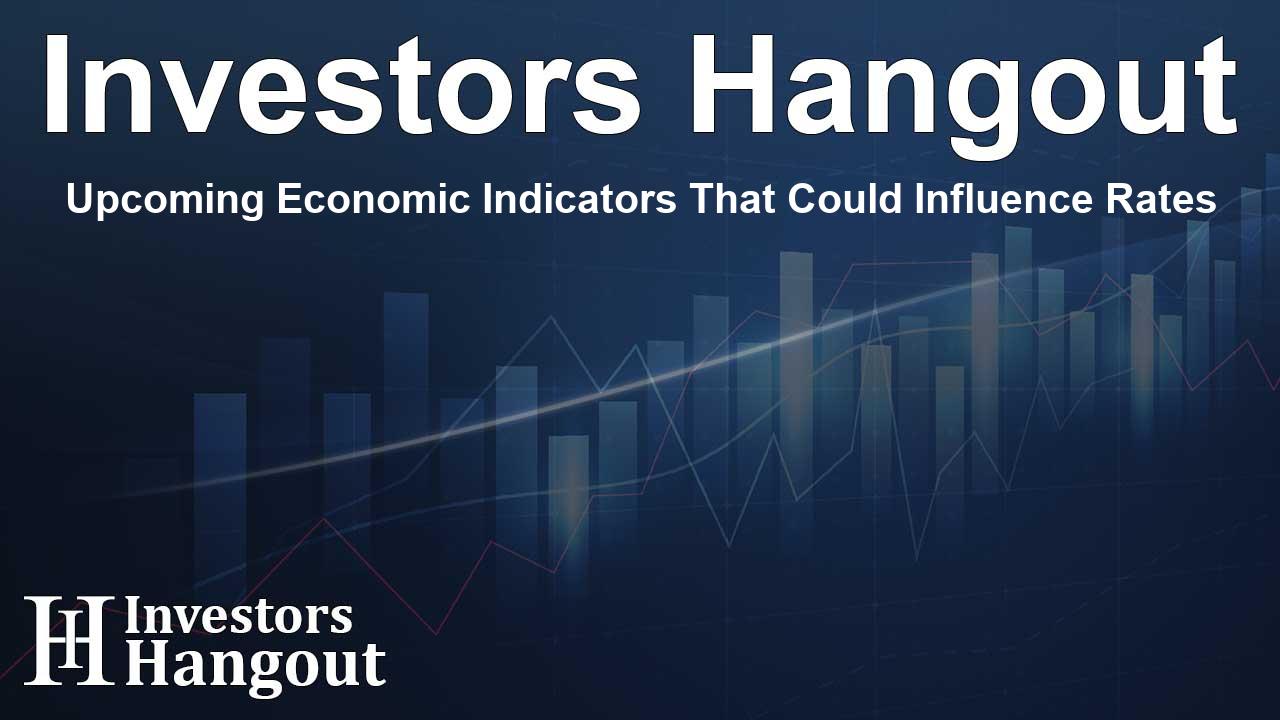Upcoming Economic Indicators That Could Influence Rates

Upcoming Economic Indicators That Could Influence Rates
With discussions from Fed Chair Jerome Powell about potential easing, the markets are now keenly observing upcoming economic data for confirmation on this stance.
While there has been speculation surrounding a possible rate cut by the Federal Reserve, as hinted by Powell last week, it seems that concrete decisions require more than just words. The forthcoming data on employment and inflation will play a pivotal role ahead of the Federal Open Market Committee (FOMC) meeting scheduled in mid-September. This upcoming meeting will not only highlight the economic landscape but also assess the consistent tension between achieving full employment and maintaining price stability.
Economists will be closely monitoring the PCED inflation rate data that is due for release soon. Analysts predict this inflation rate will have implications for Fed policy moving forward, especially as the economy grapples with various headwinds including tariff impacts and global market dynamics.
(1) The Significance of the PCED Inflation Rate
Recently, Powell pointed out the importance of the core PCED inflation rate, which is projected to remain at an annualized increase of about 2.9%. This slight uptick compared to the previous month indicates that price pressures are still present, raising questions about the Fed's next moves. Additionally, the Cleveland Fed's inflation forecasting model points towards a possible rise to around 3.0%, adding to the anticipation surrounding this important economic indicator.
(2) Insights from New Home Sales
New home sales data expected for July will likely also present a less optimistic outlook. With an intense inventory of homes available—estimated at nearly ten months’ supply—experts do not foresee a drastic rise in new sales. The ongoing housing market conditions will be essential to monitor as they reflect consumer confidence and spending capabilities.
(3) Consumer and Business Sentiment Surveys
The Conference Board’s Consumer Confidence Index report will shed light on the labor market's state in August. This data, particularly regarding job availability, will provide essential insights into how potential job vacancies react against broader economic pressures. Moreover, regional surveys highlighting business activity from the Dallas Fed, Richmond Fed, and Kansas City Fed are anticipated to affirm a positive trend in business sentiment, suggesting resilience in the economy.
(4) Jobless Claims Data
The weekly report on new unemployment insurance claims will also be pivotal. Analysts expect these claims to reveal a low rate of layoffs, indicating stability in the workforce. However, the continuing claims are projected to edge upwards, suggesting that individuals are remaining unemployed for longer periods, which could signal a mismatch between available jobs and the skills of those seeking work.
In conclusion, the upcoming data releases will undoubtedly influence the Federal Reserve's deliberations regarding interest rates. Investors and market watchers must remain vigilant as this information could drastically alter the economic landscape.
Frequently Asked Questions
What is the PCED inflation rate?
The PCED inflation rate is an important economic indicator that measures the change in prices for goods and services consumed by individuals, helping to assess economic stability.
Why are jobless claims important?
Jobless claims are critical as they provide insights into the labor market's health, indicating whether layoffs are increasing or stability is being maintained.
How do consumer confidence surveys affect markets?
Consumer confidence surveys signal how confident consumers feel about the economy, influencing their spending behavior and ultimately affecting economic growth.
What is the significance of new home sales data?
New home sales data reflect broader economic conditions, consumer confidence, and housing market health, making it an important economic indicator.
How can inflation data impact interest rates?
Inflation data directly influences the Federal Reserve's decisions on interest rates, as higher inflation may lead to rate hikes to control prices, whereas lower inflation could prompt cuts.
About The Author
Contact Logan Wright privately here. Or send an email with ATTN: Logan Wright as the subject to contact@investorshangout.com.
About Investors Hangout
Investors Hangout is a leading online stock forum for financial discussion and learning, offering a wide range of free tools and resources. It draws in traders of all levels, who exchange market knowledge, investigate trading tactics, and keep an eye on industry developments in real time. Featuring financial articles, stock message boards, quotes, charts, company profiles, and live news updates. Through cooperative learning and a wealth of informational resources, it helps users from novices creating their first portfolios to experts honing their techniques. Join Investors Hangout today: https://investorshangout.com/
The content of this article is based on factual, publicly available information and does not represent legal, financial, or investment advice. Investors Hangout does not offer financial advice, and the author is not a licensed financial advisor. Consult a qualified advisor before making any financial or investment decisions based on this article. This article should not be considered advice to purchase, sell, or hold any securities or other investments. If any of the material provided here is inaccurate, please contact us for corrections.
